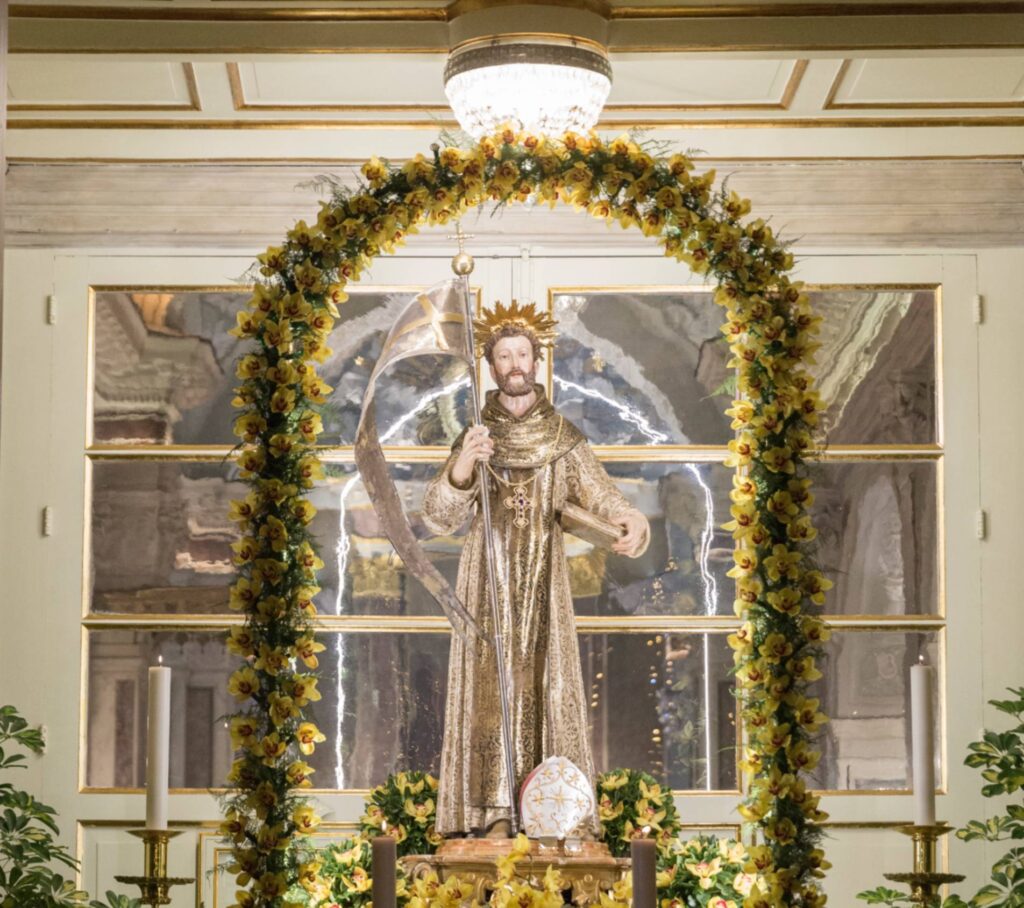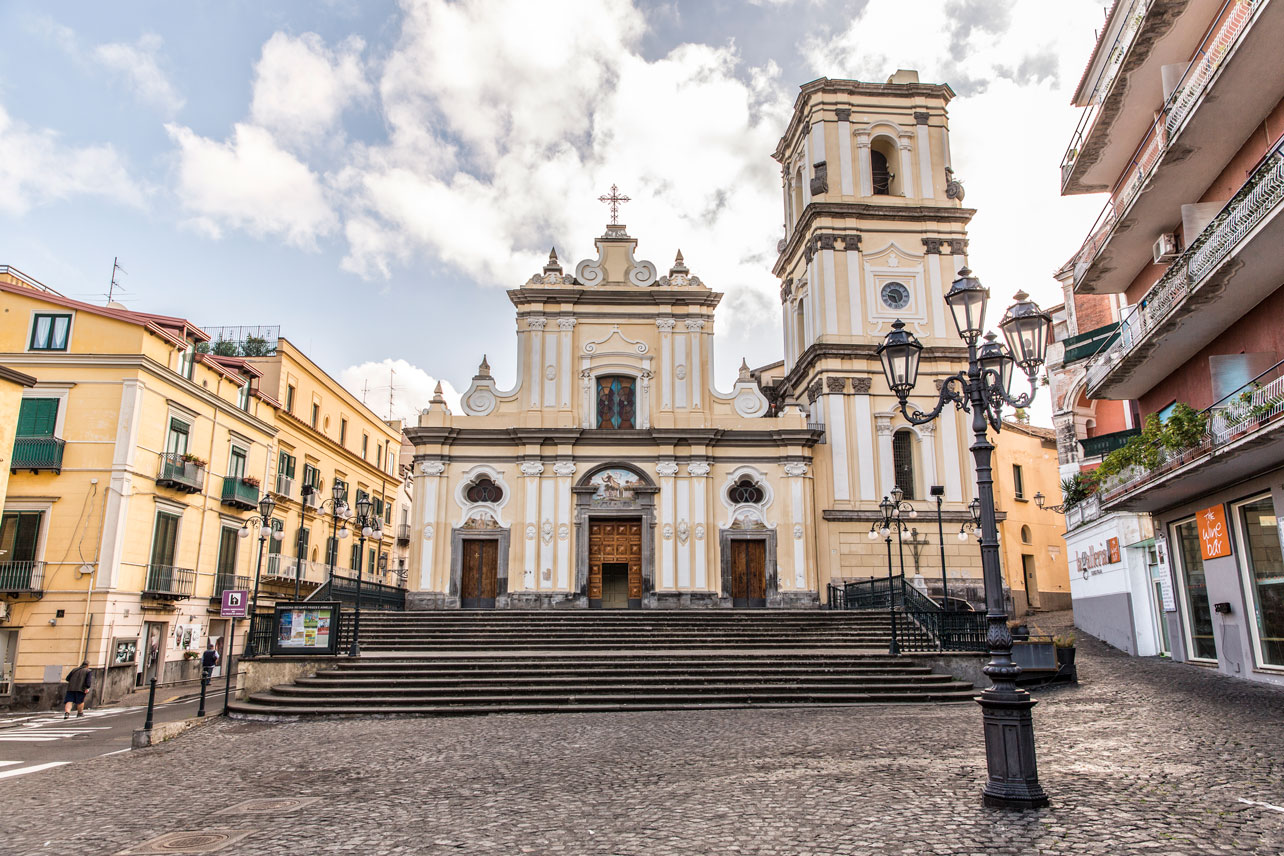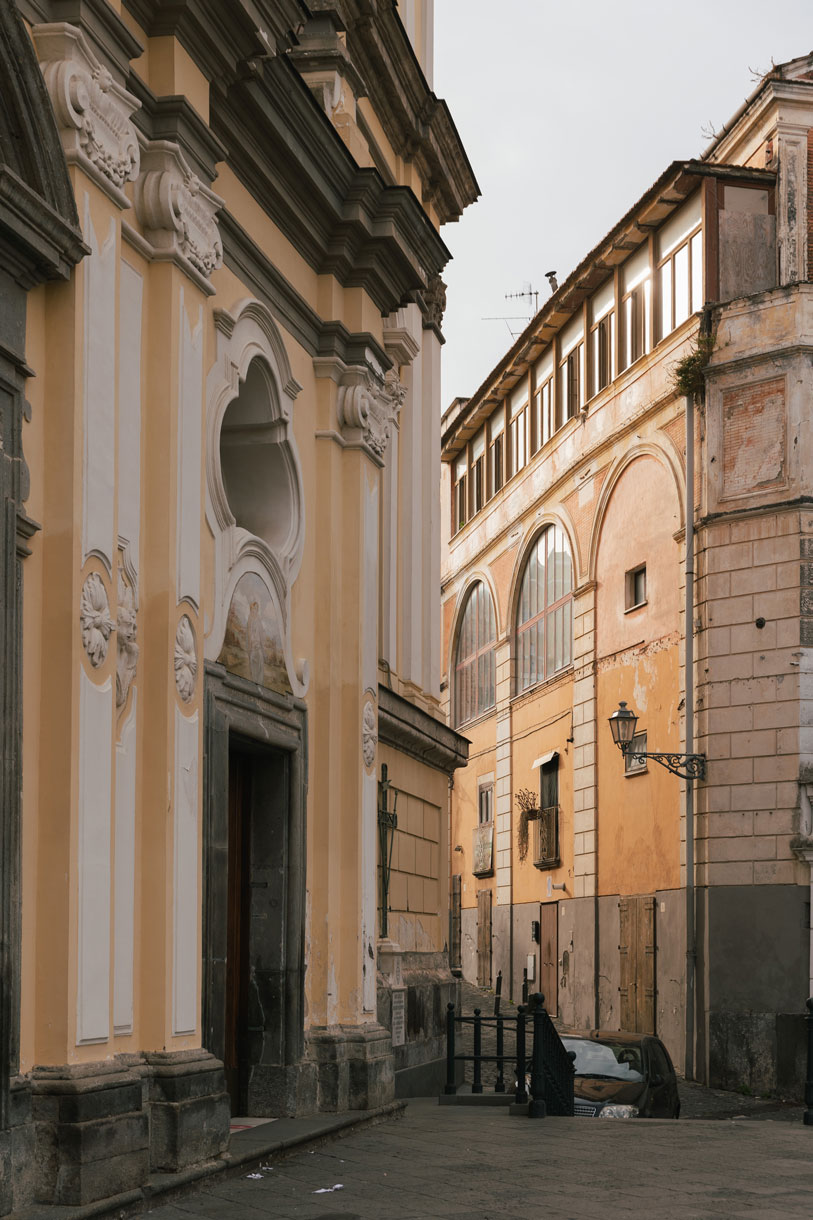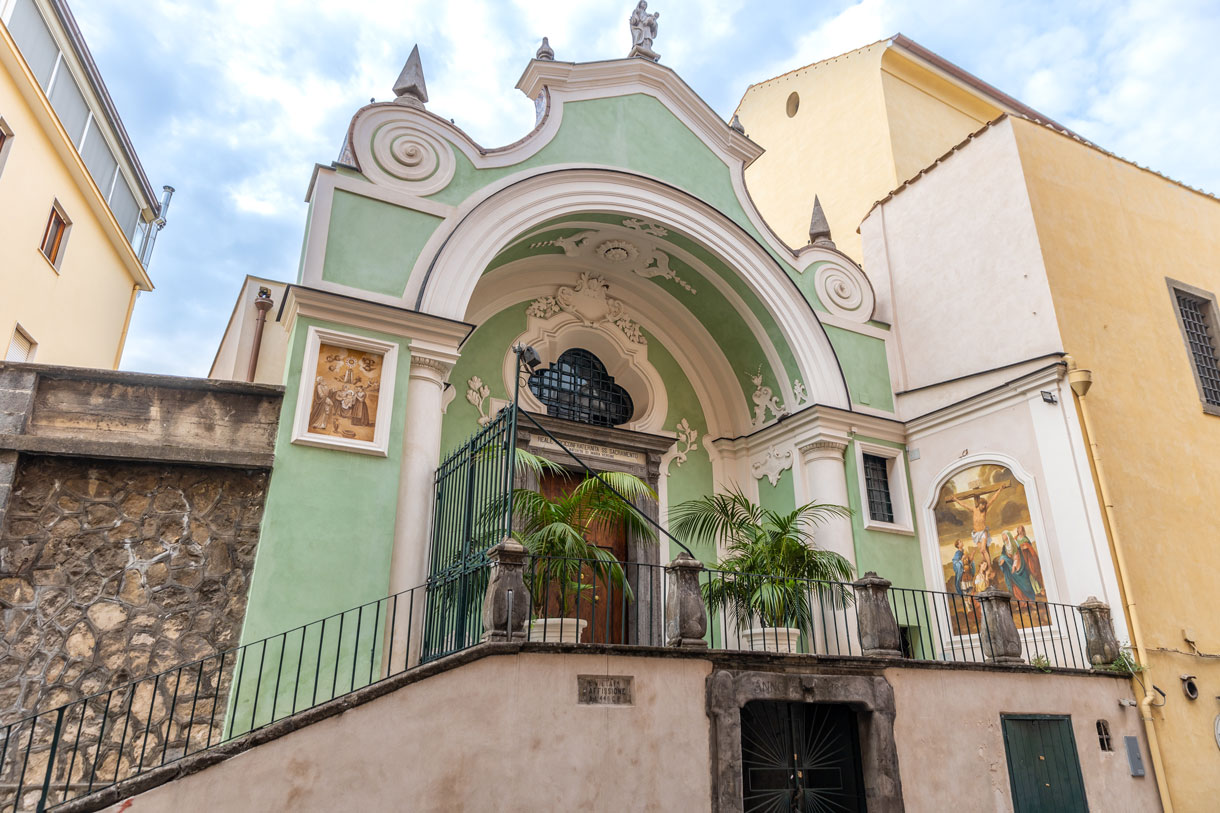In the heart of the historic center of Sant’Agnello, just a few steps from the Circumvesuviana train station, stands the majestic Church of Saints Priscus and Agnellus. This sacred building is the town’s main spiritual landmark and one of the most powerful symbols of its identity.
More than just a place of active worship, the church is also a noteworthy artistic and architectural testimony, capable of captivating anyone visiting the Sorrentine Peninsula in search of beauty, history, and spirituality.
Church of Saints Priscus and Agnellus: Origins and Devotion
The origins of the church likely date back to the 15th century, when a small chapel dedicated to Saint Priscus stood here, around which the first urban settlement of Sant’Agnello developed. With the growing devotion to Saint Agnellus—who became the town’s patron saint and protector of pregnant women—the church was expanded and renovated several times, eventually taking on its current appearance.
The church features a dramatic vesuvian stone staircase leading up to three entrance portals, the central one being the largest. The baroque-style façade is flanked by a bell tower whose chimes mark the rhythm of everyday life in the town.

Opere e Tesori
The church’s interior follows a Latin cross layout with three naves and serves as a true treasure trove of sacred art:
- Seventeenth-century paintings by Giuseppe Castellano, including The Trinity with the Virgin and Saints, The Last Supper, and The Washing of the Feet, all framed in elegant golden frames.
-
Wooden statues of Saints Agnellus and Priscus, placed on either side of the altar.
-
The main altar, with a 19th-century wooden choir.
-
Two paintings by Gustavo Mancinelli, depicting the Virgin and Child alongside the church’s titular saints.
A particularly valuable feature is the altar of marble and inlaid stones in the right nave, created by the workshop of Dionisio Lazzari, a master of Neapolitan Baroque. The floor in opus sectile includes ancient Roman marbles, likely sourced from the Villa of Pollio Felice in Sorrento.
Among the strongest symbols of local devotion is the statue of the Dead Christ, which is the centerpiece of the Good Friday procession, one of the most moving and well-attended religious events in Sant’Agnello.
Visiting the Church of Saints Priscus and Agnellus means embarking on a journey through faith, art, and history—into the sacred soul of Sant’Agnello. Every detail, from the façade to the flooring, tells the story of the town’s evolution and the deep connection between spirituality and culture.





